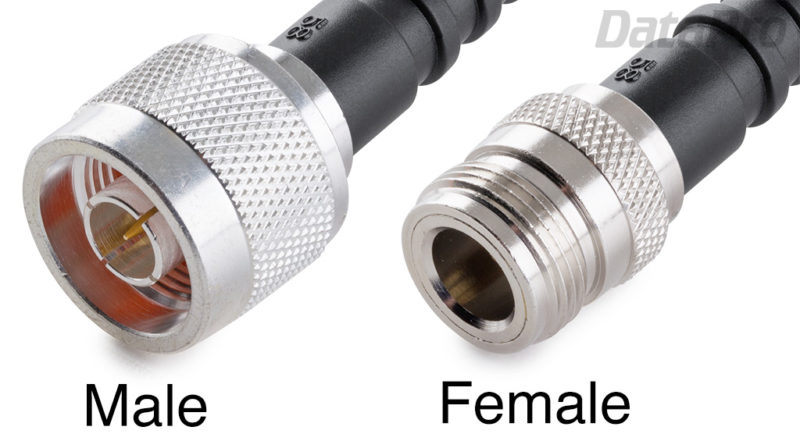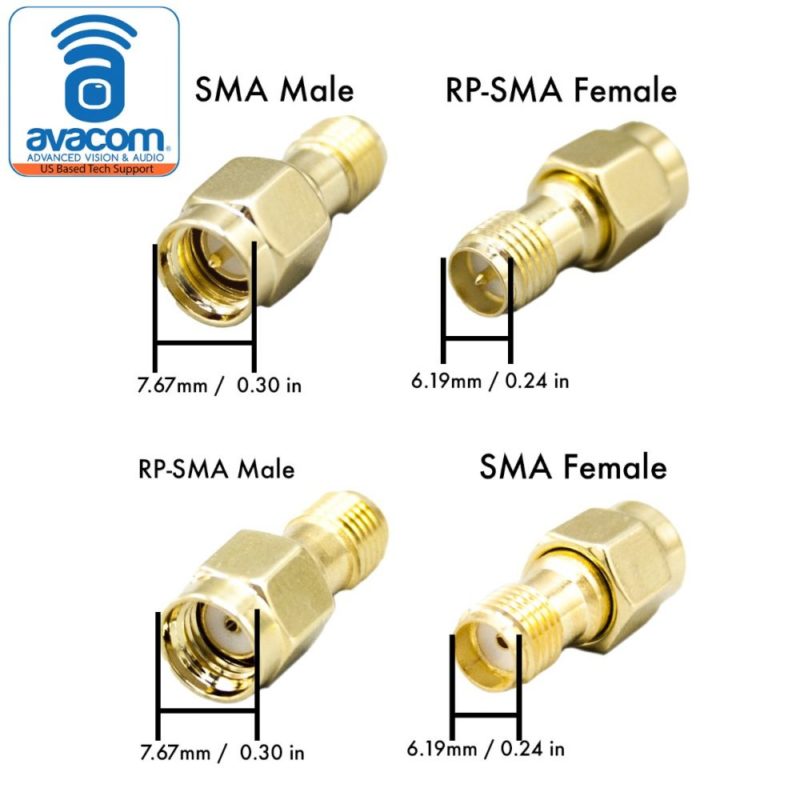Have a question about which connector or power supply or antenna cable you should get? Here’s an easy reference to use when you’re ordering parts. I make every effort to keep this updated, but in some cases the manufacturers themselves are contradictory. Check YOUR hotspot to make sure you’re getting the right connector and PoE injectors. Most hotspots are fine with an 802.3af, or “active” PoE injector/splitter combo. Check your Hotspot carefully to make sure you’re getting the right sized plug at the splitter end; USB‑C or a specific size of barrel plug 5.5 x 2.1 or 2.5 etc.
[ninja_tables id=“1700”]As you’ll see, most of the production miners use an RP-SMA connection. That means the cable you’ll want to order if you’re installing an aftermarket antenna will be RP-SMA male <–> (usually) N‑type male.
Want to dive deeper, check out some pictures, and learn a little more? Here we go!
RP-SMA stands for Reverse Polarity SubMiniature version A). The RP series were designed to stop you from connecting an “unauthorized antenna” to your gear, whether that’s a Helium hotspot or any radio. The FCC’s thought process was along the lines of, “all manufacturers will have RP-SMA so you can only connect them to RP-SMA capable antennas, and nobody will sell RP-SMA connectors to consumers.” Prior to the internet making all information and parts available to everyone, that method worked well enough. Now, it’s just confusing. Onward!
Female RP-SMA connectors have a female contact body (ground) and a male inner pin contact (signal). A male RP-SMA connector is the opposite in both respects — male body (inside threads) with a female inner sleeve contact.
Here are all four connector types. You’ll also see the female referred to as an “jack”, and the male referred to as “plug”. Slightly confusing, right?
Next up: N‑Type Connections
Ok, that’s the confusing stuff out of the way. Here is what you’ll typically see when connecting to an aftermarket antenna. These are called N‑type connections, and are larger in size the the SMA series.

Ok, that should clear up most of the questions surrounding what cable connection you have, and what you should get. If you have questions about cable loss, check out this post on it, or for quick reference, this table:
CABLE LOSS TABLE
[ninja_tables id=“1782”]If you’d like to go beyond just connecting some cables, there are a ton of learning options on this site.
I’ve built courses on Helium and HeliumVision, offer troubleshooting sessions, as well as custom consulting to individual clients. I dive into strategy, individual hotspot optimization, and helping you understand where you can prosper in the Helium ecosystem.
Rock on!

